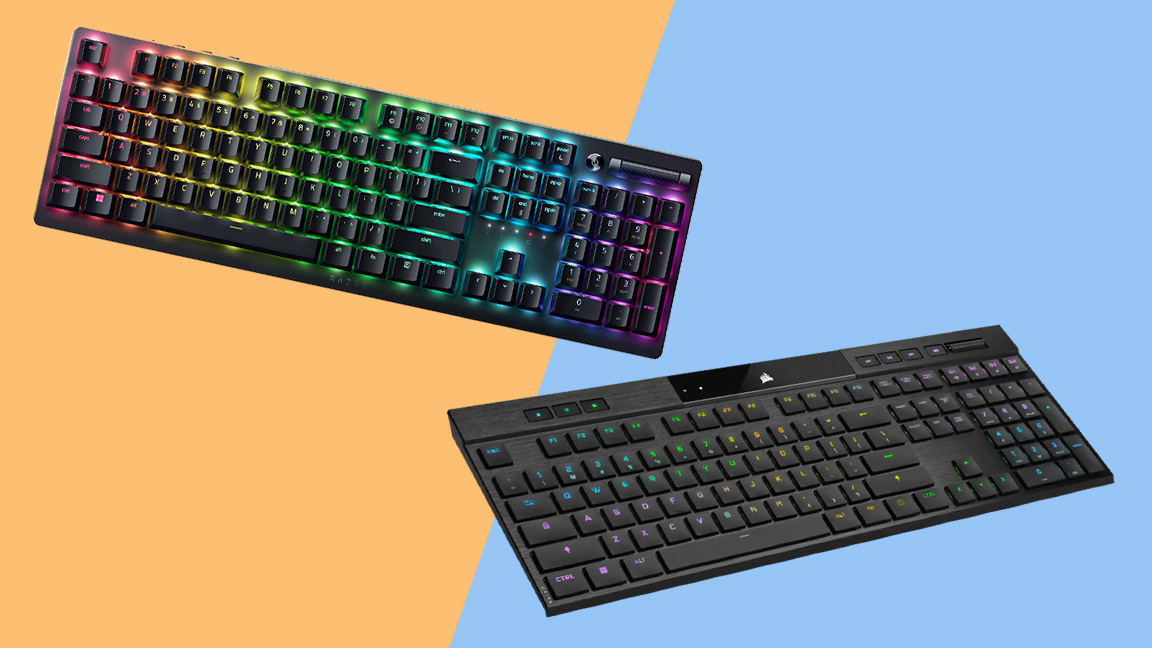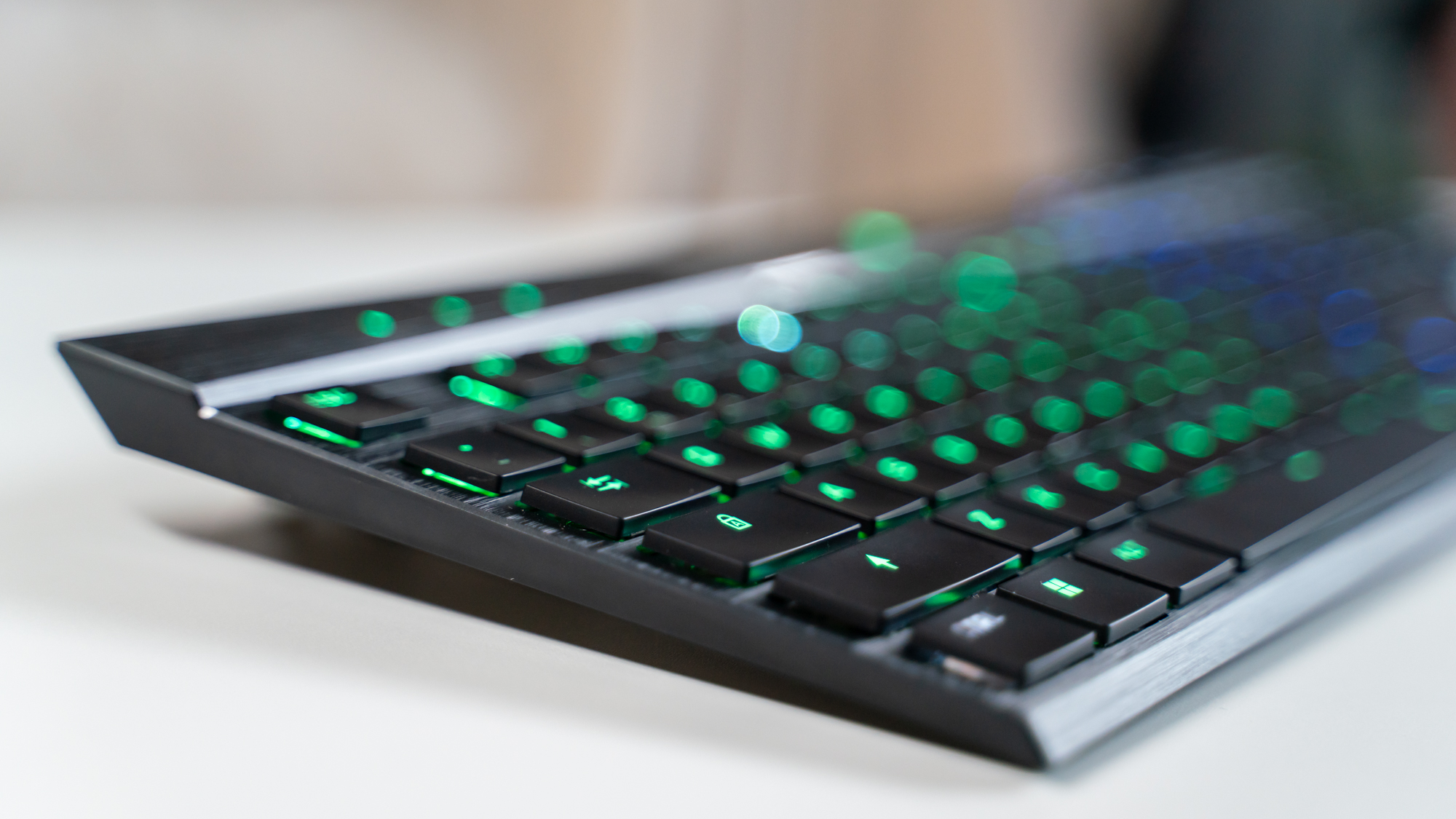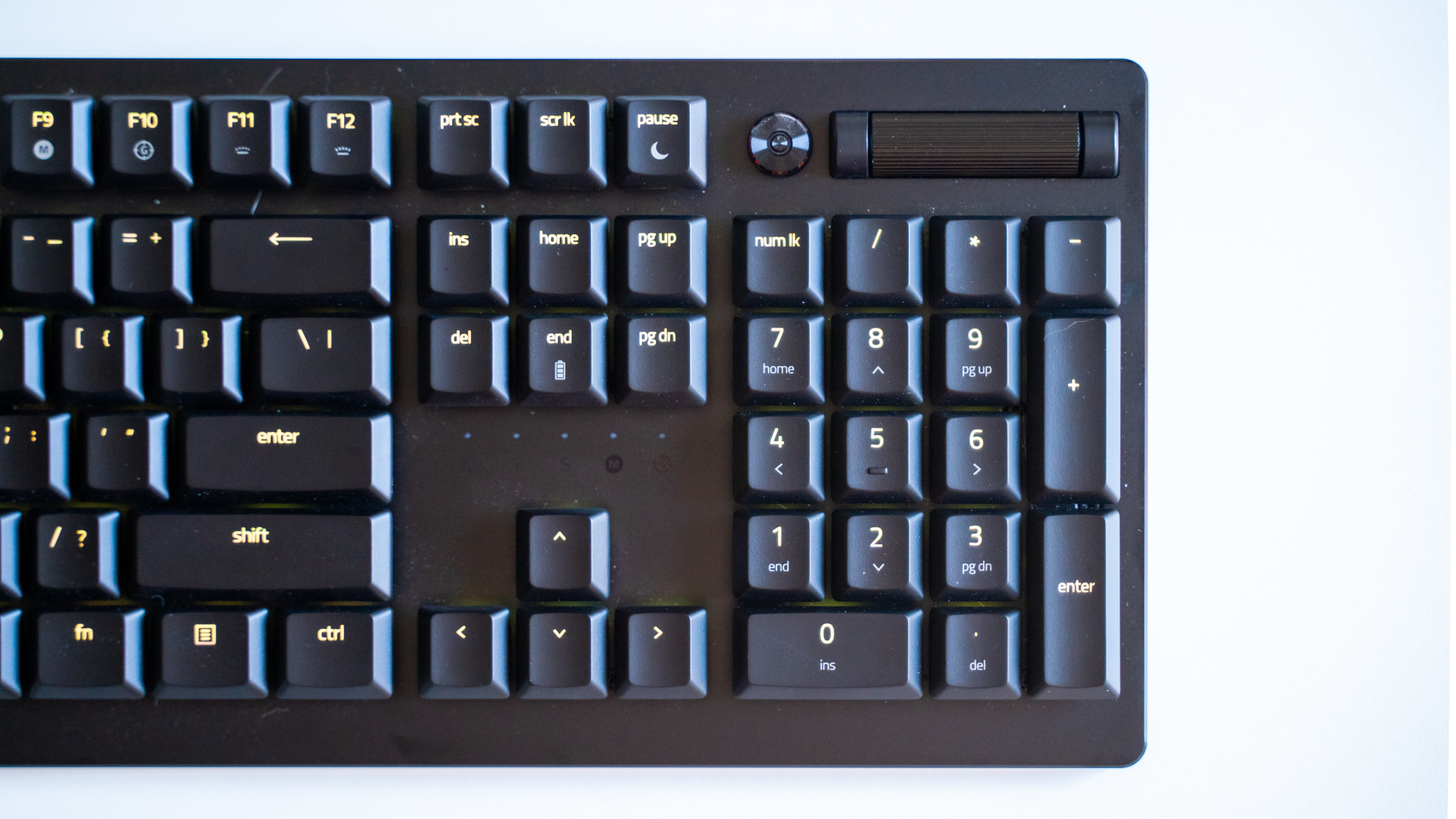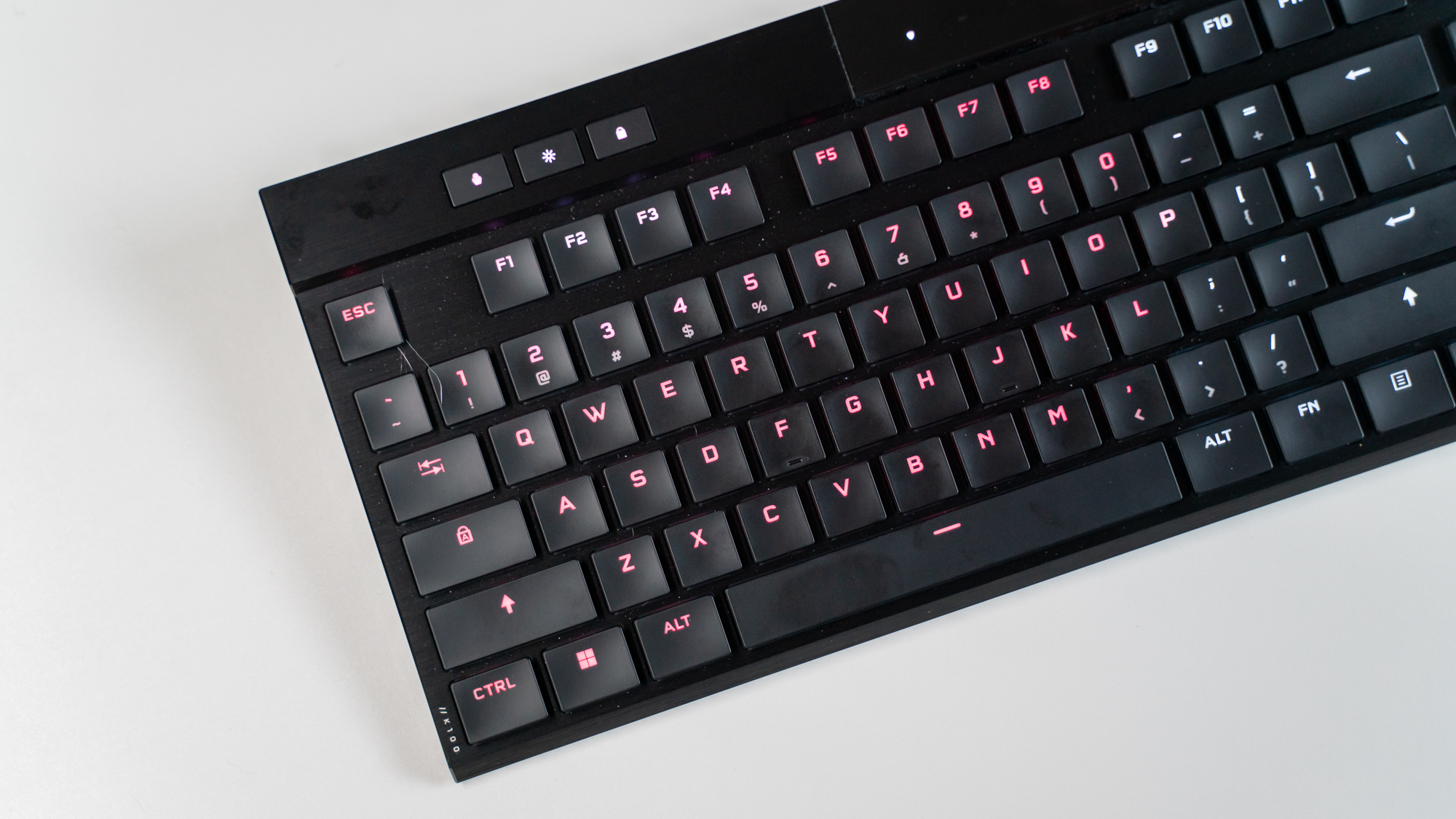Corsair K100 Air Wireless vs Razer DeathStalker V2 Pro: which wireless gaming keyboard is for you?
Find out which wireless gaming keyboard is better

Both the Corsair K100 Air Wireless and the Razer DeathStalker V2 Pro are at the top of the pile when in comes to low-profile wireless gaming keyboards.In this guide, we aim to help you choose between the two. Available at a steep price of $279 (£279, AU$479), the Corsair K100 Wireless is an ultra-thin keyboard featuring tactile switches. Razer’s DeathStalker V2 Pro is as ultra-thin as the Corsair K100, sports linear switches, and costs $219 (£249, AU$359).
The potential of a wireless gaming keyboard to simplify your gaming setup and, hence, take productivity up a notch, cannot be underestimated. Some may argue, though, that the kind of stutter-free connection a wired gaming keyboard is capable of providing is not found on wireless keyboards. While both types of keyboards certainly do have their fair share of pros and cons, performance can also be determined by the brand you’re going for. Big names in the industry, such as Corsair and Razer, are bound to impress you with their lag-free performance.
Corsair K100 Air Wireless VS Razer DeathStalker V2 Pro: design
- K100 Air features an ultrathin body and tactile switches
- DeathStalker V2 Pro also features a low-profile body, sports bright RGB lighting, and linear switches
Corsair’s keyboard measures 17mm at its thickest and 11mm at its thinnest. You don’t realize how incredibly thin that is. The Corsair K100 Air features multiple design elements that we immediately became fans of. To start off, its brushed-aluminum frame is too good to not be separately appreciated. It gives the keyboard its lightweight profile along with making sure that it looks good. Being considerably expensive, the Corsair K100 Air doesn’t skimp on any of its features. It boasts Cherry’s ultra-low-profile tactile switches, which are one of the best in the game.

The K100 Air’s low-profile keycaps are rather decently sized and suit those with relatively large hands. The keycaps are subtly rounded inward to reduce instances of finger slippage and to make sure that your fingers comfortably sit on them.
Corsair’s keyboard also sports a light indicator section in its middle that makes it so much more user-friendly than it already is. It provides users with valuable information such as its battery and connectivity status. It has some cool RGB going on as well. The lighting is programmable via a companion app and makes the keyboard vibrant and customizable.

Razer’s DeathStalker V2 measures 26.5mm at its thickest and weighs 776.5g (27.4z). We see a 5052 aluminum alloy top panel and a plastic bottom panel on this one. The plastic used is of premium quality, and, therefore, looks and feels good. The linear switches on the DeathStalker V2 are covered with ultra-durable ABS keycaps. Razer’s keyboard comes with a detachable braided fiber Type-C cable.
This keyboard also features RGB lighting. In fact, thanks to Razer’s Chroma RGB, the lighting on DeathStalker can be customized to look extremely vibrant. Especially because the lighting on the K100 Air was found to be a little less bright, the DeathStalker V2 definitely shines in this department.
Sign up for breaking news, reviews, opinion, top tech deals, and more.
- Winner: Tie

Corsair K100 Air Wireless VS Razer DeathStalker V2 Pro: features
- The K100 Air sports fully-programmable keys and a long battery life
- The DeathStalker V2 also features fully-programmable keys and pretty great connectivity options
Corsair’s K100 Air features fully-programmable keys and dedicated media buttons. It also sports hotkeys for cycling through various profiles. We also see four dedicated macro keys on the keyboard. These keys double as connectivity keys, too. There’s also a volume roller that’s intuitive and easy to use. It also hosts pretty generous onboard storage that can fit up to 50 profiles and 20 lighting effect layers.
The DeathStalker V2 Pro meanwhile comes with fully-programmable keys and a hybrid on-board memory that allows you to save your macros and RGB lighting profiles on it. The media button that enables you to play or pause and the volume roller that lets you tweak the volume and mute the sound are great as they are. However, if you need them to do more for you, you can simply change their setting in the Razer Synapse 3 app.
This keyboard offers three connectivity modes: 2.4GHz HyperSpeed wireless, Bluetooth, and USB-C. The Bluetooth mode allows you to connect it to three different devices. Even better, you can quickly switch between those devices using a set of three quick-switch buttons located on the front of the keyboard.
- Winner: Tie

Corsair K100 Air Wireless VS Razer DeathStalker V2 Pro: performance
- The K100 Air Wireless sports an extremely fast polling rate and short travel
- The DeathStalker V2 features extremely fast and quiet keys
- The K100 Air Wireless wins in battery life
The Corsair K100 Air Wireless features a lightning-fast polling rate of 8,000Hz via a USB connection, which is pretty insane. When connected wirelessly, the keyboard has a polling rate of 2,000Hz. While some may argue that the polling rate figures may be kind of an overkill, we think it has more pros than cons. Yes, it may end up taking a little more of your PC’s resources, but all in all, not having to worry about delays while gaming is a huge plus.
The Razer DeathStalker V2 Pro, on the other hand, tops at 1,000Hz polling rate. We’re not exactly sure why, as Razer has rolled out gaming keyboards with higher polling rates before, but that should be more than enough for the majority of gamers out there.
Whatever the polling rate, however, we’ve tested both gaming keyboards, and we have zero complaints about their performance. Both roll out incredibly fast responses.

The area where you might see the biggest difference is in the switches. The Corsair K100 Air Wireless comes with a low-profile, scissor-like mechanical switch from Cherry. This Cherry MX Ultra Low-Profile Tactile switch boasts a pre-travel of 0.8mm, an actuation force of about 66g, and a key travel of 1.8mm. Meanwhile, the Razer DeathStalker V2 Pro comes with Razer’s linear low-profile optical switches, which have an actuation distance of 1.2mm, an actuation force of 45g, and a key travel of 2.8mm.
Both switches are ultra-fast, extremely reliable, and very quiet, but they also feel very different when being pressed. Personally, we feel that Razer’s optical switches feel slightly mushy and actually prefer the Cherry switches on the K100 Air Wireless for typing and gaming. However, at this point, it’s really more a matter of personal preference.
The one place that Corsair’s offering edges slightly ahead is battery life. The DeathStalker V2 Pro’s battery life is decent, having a 40-hour rating with RGB lighting set at 50% and a 24-hour rating with brightness set to 100%. The K100 Air Wireless’ battery life, on the other hand, has 50 hours with the RGB lighting on and a whopping 200 hours of gameplay with it off.
- Winner: Corsair K100 Air Wireless, but only by a narrow margin
Corsair K100 Air Wireless VS Razer DeathStalker V2 Pro: which one should you go for?
Both keyboards are excellent in their own ways. The ultimate decision depends on what you’re looking for in a gaming keyboard. If you are a fan of RGB, you’re going to like the DeathStalker more as it features brighter lighting as compared to the K100. If you don’t like your keys making a lot of noise, definitely go for the DeathStalker. Its linear switches are as quiet as they can get.
The K100, on the other hand, offers an insanely long battery life, especially without RGB lighting on, so that’s another feature you can base your decision on.Some find the feel of tactile switches better and more convenient to use. If you’re that person, the K100 is what you should opt for. Its ultrathin body is another one of its very tempting features.
Dua is a freelance technology writer who's contributed to TechRadar, PCMag and ScreenRant. She's been a technology fan since she was young, and used to pore over the latest product reviews. When not playing with or researching some new piece of tech, you might find her reading, working out or playing the ukelele.
- Michelle Rae UyContributor